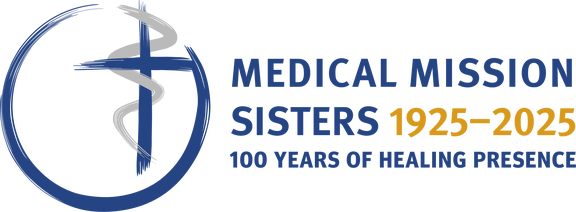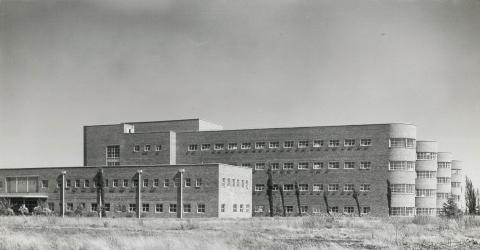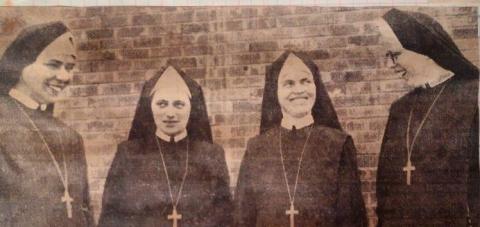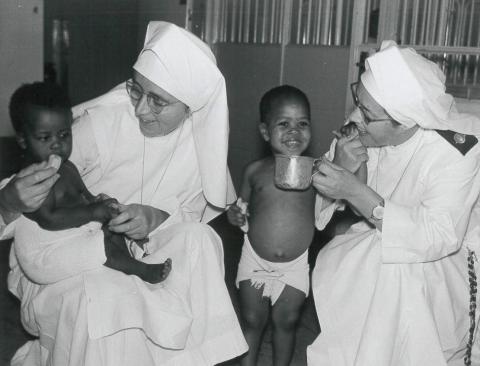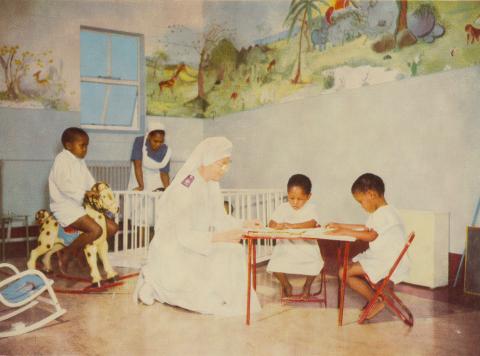1951
The Medical Missionary magazine in its 1970 Fall edition relates how the Ernest Oppenheimer Hospital in Welkom, South Africa, 'challenged the creativity of Medical Mission Sisters', when they agreed to staff it for the Anglo-American Corporation of South Africa in 1951.
The seeds of the involvement had been sown in October 1948 when Monseigneur Gerard van Velsen, Vicar Apostolic of Kroonstad, South Africa, visited Imstenrade in The Netherlands. He was looking for Catholic sisters for medical mission work among the oppressed African population of the gold mine district who, due to racial segregation laws, suffered and experienced discrimination under the dominance of the South African apartheid regime. They were being exploited to work in the mines - with insufficient medical care offered. The request to staff a brand-new hospital was repeated in 1949 and 1950. Sr Eleonore Lippits wrote to Mother Anna Dengel, as follows:
“The Mining Board will build a fairly large hospital (200-300 beds) and has asked the mission to find Catholic Sisters to take charge of it … The hospital will need 25 nurses according to their estimates. Nursing and midwifery certificates are accepted, but not medicine.”
The request generated much soul-searching and Anna Dengel concluded in a letter to Sr Eleonore:
“We have to keep in mind that to undertake a hospital of this kind is something different from a hospital of our own. We cannot lay down policies. If some of the policies should not be according to Catholic principles, it would not be in our power to change them; for instance, if the African employees would not be properly paid or treated. Of course, that is objectionable to us... By undertaking this type of hospital, we are not sure that there will not be some social injustices or social principles that are not acceptable to Catholics. If we want to avoid that totally, then we should not take up such a hospital. The thing is: what is better – to undertake such a hospital and hope for the best, and try to bring in Catholic influence? Or, simply not take up any such hospital? That is the problem. In my opinion, it is worth trying ...”
[Extract from a copy of a letter to Sr Eleonore, 26 Oct 1950]
A tentative agreement was reached, with the first pioneer sisters arriving in March 1951. They were Medical Mission Sisters Anna, Paula, Hildegard and Laeticia.
Those were challenging years when this small group of Dutch Medical Mission Sisters tried - at the height of apartheid - to live out their mission of healing presence in a way that promoted racial integration at all levels. The sisters’ first experiences brought home that taking a more radical stand would lead to a situation where they could be forced to discontinue their involvement. They chose to foster an atmosphere of peace and to establish conditions conducive to developing a better understanding between the different races.
At first, the hospital was only for the men, who worked in the mines, and their families could not be admitted; only very limited outpatient care could be given to them or to the families of the hospital staff, despite the appalling conditions in which many were forced to live. In June 1956, a new wing was opened for the wives and children of the miners. It meant that the hospital had a total of 800 beds, 60 of which were for women and children.
In 1958, there was further progress when the sisters started a nursing training course for African orderlies. The programme was finally recognised by the government in September 1967, meaning that, for the first time, these nurses were recognised by the government as fully qualified nurses - a huge achievement at a time of continuing racial segregation.
By the end of the 1970s, the aim of the sisters to prepare and support local South African nurses to take over from them in both direct care and management positions had been realised. South African nurses, who had completed postgraduate State Registered Nursing studies, were in charge of the departments of public health, central supply, the operating theatre and the school for nursing assistants. At that time, the sisters felt they had done all they could to promote local African leadership in the institution, as well as just relationships across the different ethnic groups in the hospital. Over the years, they had worked, despite exhausting demands and challenges, according to Anna Dengel’s ideals of coming, working, teaching, handing over - and leaving. The last Medical Mission Sister left in February 1981.
One of early sisters at Welkom was Sister Damiana Van Der Drift (1914-2008), who arrived to manage the pharmacy at the hospital in 1952 and, except for two short interruptions, remained there until 1981.
After she retired from the hospital pharmacy in 1978, she taught literacy classes to residents of the township for several years and, according to the tribute written for her by long-term colleague, Sister Tabitha Tangelder, she now also, ‘had time to express herself totally in paint and brush’.
The 2008 tribute said that to this day many rooms have one of the aquarelles painted by her.
We hope that the murals might have stood the test of time.
With thanks to Sister Lynne Rooker for her research on the Ernest Oppenheimer Hospital.
